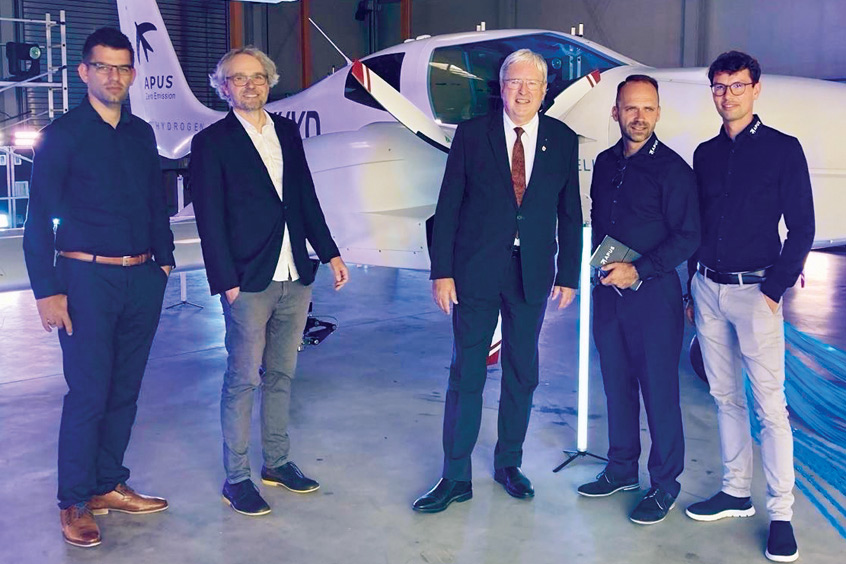Why visit ACE ’25?

Germany-based aircraft manufacturer APUS Zero Emission has celebrated the official roll-out of its APUS i-2 aircraft. In perfect sunny weather, Brandenburg minister of economic affairs Prof Dr Jörg Steinbach, alongside APUS CEO Phillip Scheffel, opened the event at Strausberg airfield in front of nearly 300 invited guests, delivering the heartfelt congratulations of the state of Brandenburg.
Scheffel says: “Without the outstanding work and dedication of our team, this success would never have been possible. Together, we have redefined the boundaries of modern aviation.”
The APUS i-2 is an emission-free aircraft designed for daily use. As a four seat, normal category (CS-23) aircraft, the APUS i-2 has a maximum take off weight of 2,200kg, a range of 500 nautical miles (900km) and a cruising speed of up to 160ktas. These performance figures are comparable to most modern four-seat aircraft.
The propulsion system is based on a hydrogen fuel cell, making the aircraft 100 per cent emission-free, with no CO2 and no NOx. This is made possible by APUS’ patented structurally integrated hydrogen storage system, which allows for up to 25 per cent higher specific energy density than conventional hydrogen tanks and up to 10 times better energy density than battery-electric aircraft. Additionally, this system avoids the use of rare minerals commonly found in batteries.
Technical specifications of the APUS i-2:
- Range: 500nm/900km
- Passenger capacity: one pilot and three passengers
- Wingspan: 13.2m
- Length: 8.9m
- Maximum altitude: 4,000m (current propulsion)
- MTOW: 2,200kg
- Maximum speed: 160ktas
- Planned price: approximately 1.1 million euros
- Power output: two times 135 kW take off power, two times 100 kW fuel cell
Next steps:
- First flight: end of 2024/beginning of 2025
- Certification: planned by 2027, with additional nine seat and 19 seat models in development
- Market launch: expected in 2028
Following the roll-out, APUS will begin a period of intensive testing, during which the aircraft systems will be further optimised and the final preparations will be made for her maiden flight. The experience gained through the design and operation of this aircraft has built a strong platform upon which to develop version 2.0 of the propulsion system and to bring APUS’ patented structurally integrated hydrogen storage system to market. APUS plans to deliver the first aircraft in 2028.